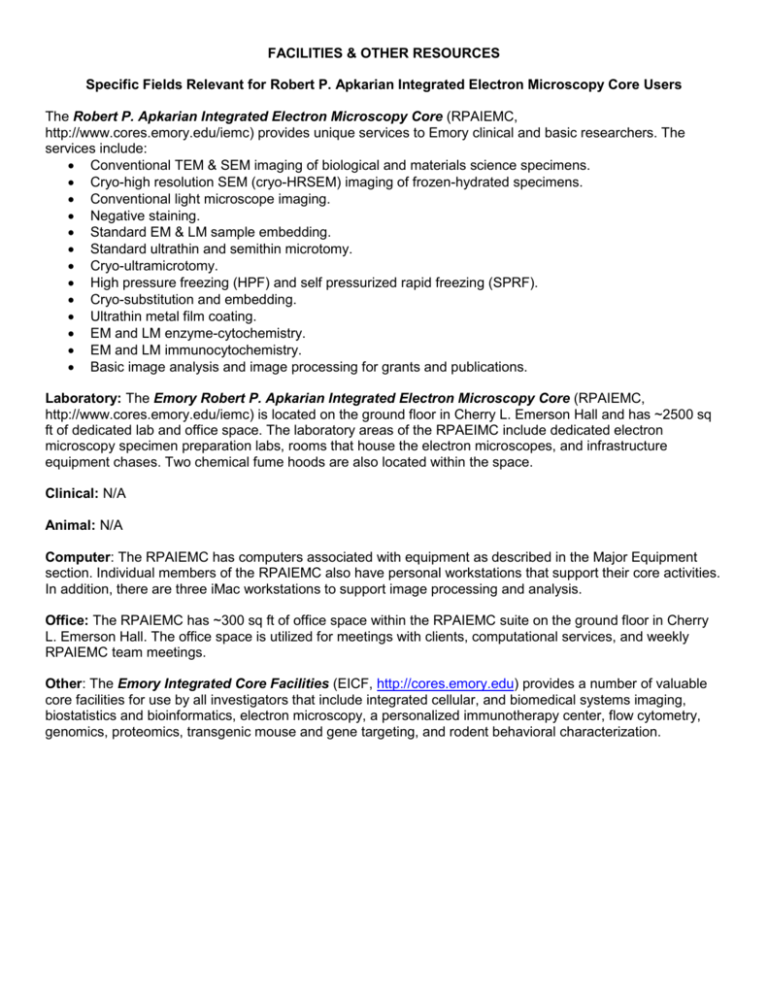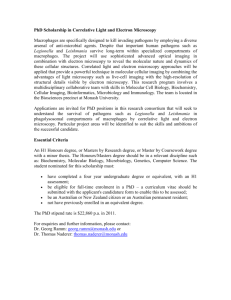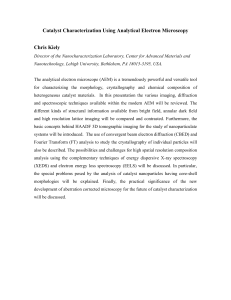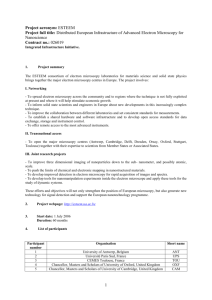FACILITIES & OTHER RESOURCES Specific Fields Relevant for
advertisement

FACILITIES & OTHER RESOURCES Specific Fields Relevant for Robert P. Apkarian Integrated Electron Microscopy Core Users The Robert P. Apkarian Integrated Electron Microscopy Core (RPAIEMC, http://www.cores.emory.edu/iemc) provides unique services to Emory clinical and basic researchers. The services include: Conventional TEM & SEM imaging of biological and materials science specimens. Cryo-high resolution SEM (cryo-HRSEM) imaging of frozen-hydrated specimens. Conventional light microscope imaging. Negative staining. Standard EM & LM sample embedding. Standard ultrathin and semithin microtomy. Cryo-ultramicrotomy. High pressure freezing (HPF) and self pressurized rapid freezing (SPRF). Cryo-substitution and embedding. Ultrathin metal film coating. EM and LM enzyme-cytochemistry. EM and LM immunocytochemistry. Basic image analysis and image processing for grants and publications. Laboratory: The Emory Robert P. Apkarian Integrated Electron Microscopy Core (RPAIEMC, http://www.cores.emory.edu/iemc) is located on the ground floor in Cherry L. Emerson Hall and has ~2500 sq ft of dedicated lab and office space. The laboratory areas of the RPAEIMC include dedicated electron microscopy specimen preparation labs, rooms that house the electron microscopes, and infrastructure equipment chases. Two chemical fume hoods are also located within the space. Clinical: N/A Animal: N/A Computer: The RPAIEMC has computers associated with equipment as described in the Major Equipment section. Individual members of the RPAIEMC also have personal workstations that support their core activities. In addition, there are three iMac workstations to support image processing and analysis. Office: The RPAIEMC has ~300 sq ft of office space within the RPAIEMC suite on the ground floor in Cherry L. Emerson Hall. The office space is utilized for meetings with clients, computational services, and weekly RPAIEMC team meetings. Other: The Emory Integrated Core Facilities (EICF, http://cores.emory.edu) provides a number of valuable core facilities for use by all investigators that include integrated cellular, and biomedical systems imaging, biostatistics and bioinformatics, electron microscopy, a personalized immunotherapy center, flow cytometry, genomics, proteomics, transgenic mouse and gene targeting, and rodent behavioral characterization.







